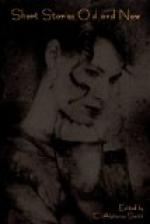Plot. From Aesop’s Fables to Kipling’s Jungle Books literature is full of animal stories. But there is no dog story better told than this and none that appeals more to our deeper sympathies. It is more of a character sketch than a short story, the incidents and characters being bound together by a common relation to Rab. From his leisurely first appearance in the story, “a huge mastiff, sauntering down the middle of the causeway, as if with his hands in his pockets,” to the unanswerable last question—“His teeth and his friends gone, why should he keep the peace, and be civil?”—we follow Rab’s pathetic career with the growing conviction that “his like was na atween this and Thornhill,” however distant Thornhill may have been. Character sketches are apt to be uninteresting because there is usually too little action and too much description. The adjectives tend to smother the verbs. “They have,” said Hawthorne of his “Twice-Told Tales,” “the pale tint of flowers that blossomed in too retired a shade,—the coolness of a meditative habit, which diffuses itself through the feeling and observation of every sketch.” But no such charge can be laid at the door of “Rab and his Friends.” The very dumbness of Rab, his mute yearning to help, his brave and loyal ministries in the hospital, doubly affecting because wordless and impotent, lend an appeal to this sketch that few sketches of men and women can be said to have.
Characters. In a later sketch called “Our Dogs” Dr. Brown tells how Rab became the property of James and Ailie. He had been terrifying everybody at Macbie Hill and his owner ordered him to be hanged. As Rab was getting the better of the contest, his owner commanded that he be shot. But Ailie, who happened to be near, noticed that he had a big splinter in his foreleg. “She gave him water,” says Dr. Brown, “and by her woman’s wit got his lame paw under a door, so that he couldn’t suddenly get at her; then with a quick firm hand she plucked out the splinter, and put in an ample meal. She went in some time after, taking no notice of him, and he came limping up, and laid his great jaws in her lap.” From that moment they became friends. A little later James was in a lonely part of the woods when a robber sprang at him and demanded his money. “Weel a weel, let me get it,” said James, and stepping back he whispered to Rab, “Speak till him, my man.” Rab had the robber down in an instant.
In “Rab and his Friends” the great mastiff shows just the qualities that we should expect from this account of his earlier career. But his sympathy and affection for Ailie, shown so tenderly in the hospital scenes, find an added pathos in the thought that he was serving his first and best friend, one who had healed his hurt as he would have healed hers if he could.]
Four-and-thirty years ago, Bob Ainslie and I were coming up Infirmary Street from the Edinburgh High School, our heads together, and our arms intertwisted, as only lovers and boys know how, or why.




